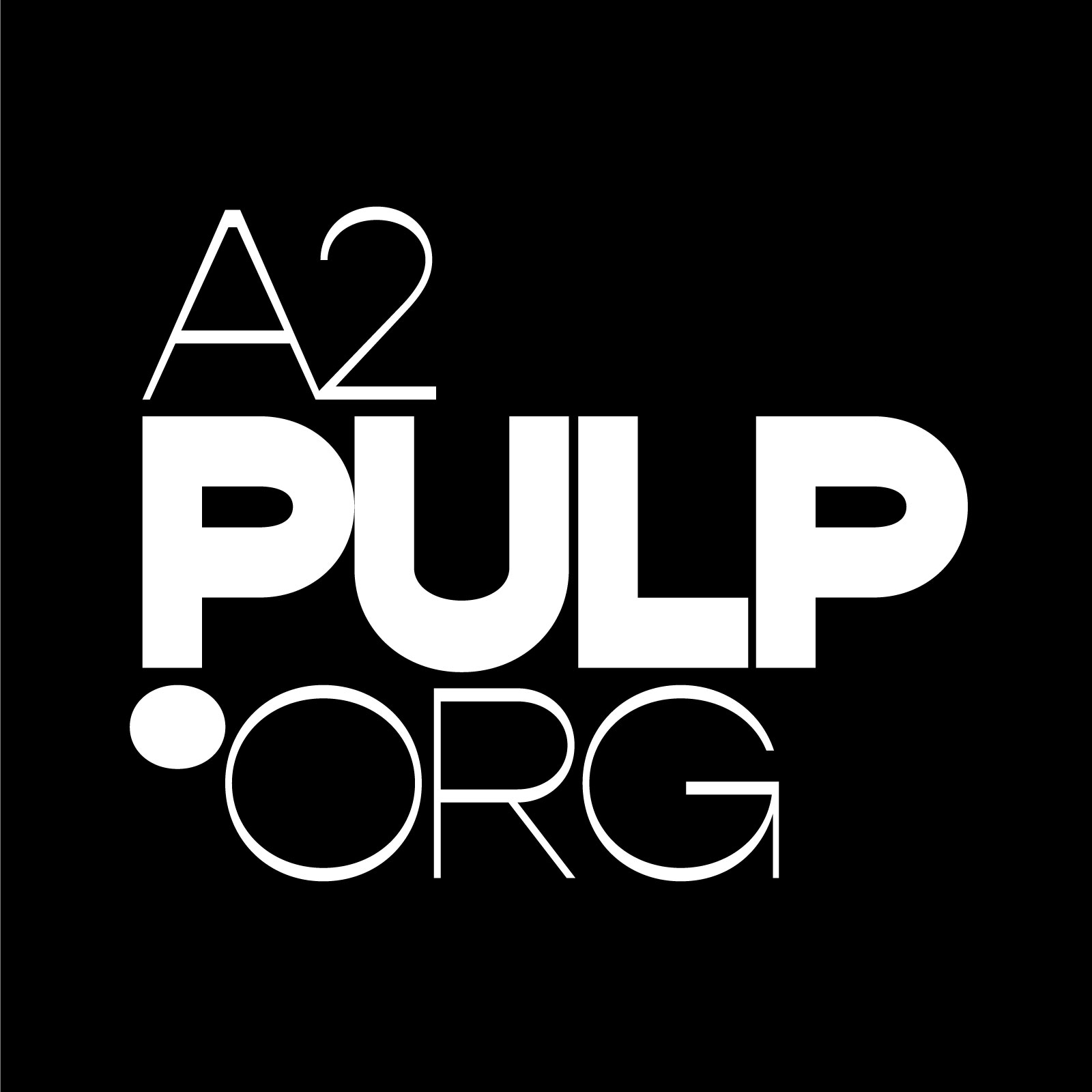Timothy Monger cleaned out his songwriting notebook for a new album recorded at home

This story originally ran on May 30, 2023. We're featuring it again because Timothy Monger State Park plays an after-hours show at AADL’s Downtown Library on September 9.
Long known as one of the leading talents on the local music scene, Timothy Monger has always had a distinctive songwriting voice. The names of two of the bands he’s led—the late, lamented Great Lakes Myth Society and the current Timothy Monger State Park—give some clues to the subjects of his songs, which often look to the outdoors, history, and other rootsy pursuits.
Those sorts of themes show up again on Monger’s new album, his fourth as a solo artist, which is simply titled Timothy Monger. Yet as he always manages to do, he finds fresh perspectives and new approaches, and the result stands out from his previous body of work.
The album is literally the result of Monger returning to his notebooks and fleshing out ideas found there, recording the songs entirely at his home in a style he describes as “homespun psych-folk.” A few of the songs are snippets of less than 30 seconds, but that’s all they require to tell their particular story. Others bring characters to life, such as a fictional “Cub Reporter” or the real-life theremin virtuoso Clara Rockmore, who Monger memorably describes as “the one who finally gave the ghosts a voice.”
“Shadow of the Weka” is a charming instrumental with Celtic overtones. And there are several nods to Michigan, including “Cranberry Bog,” “Luna Pier,” and “Sa-Wa-Quato.”
Monger recently answered a few questions about the new recording, which comes out on June 2, the same day as his album release show at The Ark.
Q: Was this album a pandemic project for you? Or put another way, what led up to this particular collection of songs being released at this particular time?
A: This was definitely an album born of circumstance. At the beginning of 2020 I was in the midst of rehearsing with my band, Timothy Monger State Park, and anticipating a fun year of creative collaboration, but like everyone else, my life was severely altered by the pandemic. I was very fortunate that my job could be done remotely, so after about a month of learning how to manage a fully at-home existence, I just started recording with the instruments and equipment I had on hand.
I'm used to working alone, but never in such a completely isolated way with no outside help. After a while, it became quite freeing. It was a welcome distraction from the horrors going on elsewhere. At the same time, this sense of communal DIY pluck emerged that I found really inspiring. People everywhere were sewing masks, baking bread, tending gardens, building things, and solving problems in very creative ways. I think all of that global energy had a positive impact on me. There were all sorts of creative decisions I probably wouldn't have made had I been making this album in a different era.
Q: This album is titled simply Timothy Monger, yet it’s your fourth solo album. Is this in some way more personal than your previous solo works?
A: Lyrically, this is the least introspective album I've ever made. So, it's not personal in the way of self-examination or overt soul-bearing like my last album was. In retrospect, it almost feels like a reaction against that intensity. Instead, it's made up of abstract little vignettes, odd characters, inspiring places, and subjects I enjoy, which feels very satisfying. Unexpectedly, I found myself reflecting on aspects of my personality that I think have dimmed or gotten lost over the years. I'm not sure how to explain it, but in a roundabout way, it helped me reconnect with my younger self, like some sort of a cosmic pat on the back to the idealistic, romantic, and quirky kid that I was. It's like I was able to reach back through the years and say, "Good job, you had it right all along." Given the dire circumstances under which this album was made, I'm surprised at how joyful and whimsical it came out. For that reason, I decided I didn't want to give it a title. It just feels like me. Or the parts of me that I like best. So yes, maybe it is more personal than my previous albums, just not in a conventional way.
Q: The press notes mention that the ideas for these songs largely grew from leftover ideas from your notebooks, yet they definitely hang together as a unit. What’s the common thematic thread(s) for you?
A: About six or seven of the songs had already been written before the pandemic. There was no common theme among them aside from just representing my own whims. "The Hebridean Dram" is about a trip to the Isle of Islay in Scotland, "Sa-Wa-Quato" is a sort of dreamlike U.P. fantasy involving the ghost of an indigenous chief, "Clara Rockmore" is about a mid-century pioneer of the theremin. They were all pretty disparate.
The newer songs I wrote while I was recording were similarly odd, and I think this sense of "peculiar people, places, and things" became a sort of theme unto itself. I was also very deliberate about the sequence of the songs, making sure the transitions are interesting and play out in a sort of sonic if not thematic narrative. I treated it like a mixtape. Every song has to make sense within the sequence, and they are edited as such.

Q: “Cub Reporter” is a delight. How did you happen to write that song?
A: I have a fondness for old-fashioned terms like that. I'm sort of a hoarder of language and have piles of notebooks filled with pleasing phrases and lyrical scraps. "Cub Reporter" was one of those phrases, and the song I ended up writing from it was a rather literal tribute to the aspiring young journalist. I suppose Superman's Jimmy Olsen was an inspiration and also probably Rinker Buck's memoir First Job, which I read many years ago.
Q: Your former band Great Lakes Myth Society makes an appearance on “The Hebridean Dram.” What about that song made you think of GLMS?
A: During our heyday, GLMS was known for singing throaty group vocals in the mold of The Clancy Brothers or The Pogues. We used to sing sea chanteys in between our own songs way back in our late-’90s existence. This song, which names each of the single-malt distilleries on the Isle of Islay, needed a big group-vocal section. I originally tried to multi-track all the group vocals myself, but it just wasn't convincing and I could think of no one better suited for the job than my erstwhile bandmates. It also gave us a good excuse to get together and drink scotch.
Q: “Shelters, Shanties, and Shacks” is lyrically very simple, yet there’s something timeless and even profound about the song. What inspired it?
A: This song is a very literal reference to D.C. Beard's 1914 book Shelters, Shacks, and Shanties. Beard co-founded the Boy Scouts of America and authored this extensive field guide to building forest shelters. I discovered it through the bibliography of another wonderful book called Paddling North by Audrey Sutherland. I'd written the entire song on an old electric piano without any lyrics. On a whim, I rearranged Beard's title and the cadence fit perfectly into a strange little soulful chorus. All of a sudden I had a poignant ballad about bushcraft that became my album's closer.

Q: Do you have a particular favorite song on this album?
A: That's a tough question. Obviously, I love them all, but If I'm being 100% honest, I think the instrumental song, "Shadow of the Weka," brings me the most joy. Its trajectory between the quasi-mystical intro, bittersweet main melody, and weirdly funky outro kind of captures the essence of what this record is about for me. The song feels like a very pure representation of my tastes and spirit. It's earnest, but kind of off-kilter and whimsical. It's named after this flightless moorhen I saw in New Zealand. At the campgrounds around the South Island, wekas would just show up and wander around, curiously poking their heads around the vans and tents. I found them so charming.
Q: You’re releasing the new album on vinyl, CD, and digital. What’s your favorite format for listening to music?
A: I stream music on a daily basis, and I do still listen to my CDs, but for pure concentrated listening, vinyl is still my favorite. It's expensive to make and you need a decent hi-fi system to really reap its benefits, but when I'm making an album, it's always what I imagine the final product to be. The pressing for this album turned out wonderfully. And it's purple.

Q: You’ve got an album release show coming up at The Ark. What can people expect for that show?
A: The release show at the Ark will serve as the relaunch of my band, Timothy Monger State Park, which hasn't played a proper show since 2017. It's a fantastic six-piece lineup featuring Matt Collar (trumpet), Carol Catherine (violin, percussion, vocals), Elly Daftuar (lead guitar, keyboards, vocals), Serge van der Voo (bass), and Mary Fraser (drums). Our good friend and former State Park member Matt Jones will open the show. And yes, we will be playing songs from throughout my catalog, along with the new material.
Q: Do you have any other projects in the works that you’d like to mention, or anything else you’d like folks to know?
A: For the rest of the year, I plan on gigging as much as possible. We have more State Park shows lined up, and Carol and I will also play some as a duo. Several of us also play in Misty Lyn's band, The Big Beautiful, and we have shows booked all summer. After that, who knows? Getting this album finished and released has been a long journey for me, so at this point I just want people to hear it and come see us play live.
Bob Needham is a freelance writer and the former arts & entertainment editor of The Ann Arbor News and AnnArbor.com.
Timothy Monger’s self-titled new album is set for release on June 2. Monger will play at The Ark on June 2 with Matt Jones opening.
Show update: Timothy Monger State Park performs an after-hours show on September 9 at AADL's Downtown Library.


































